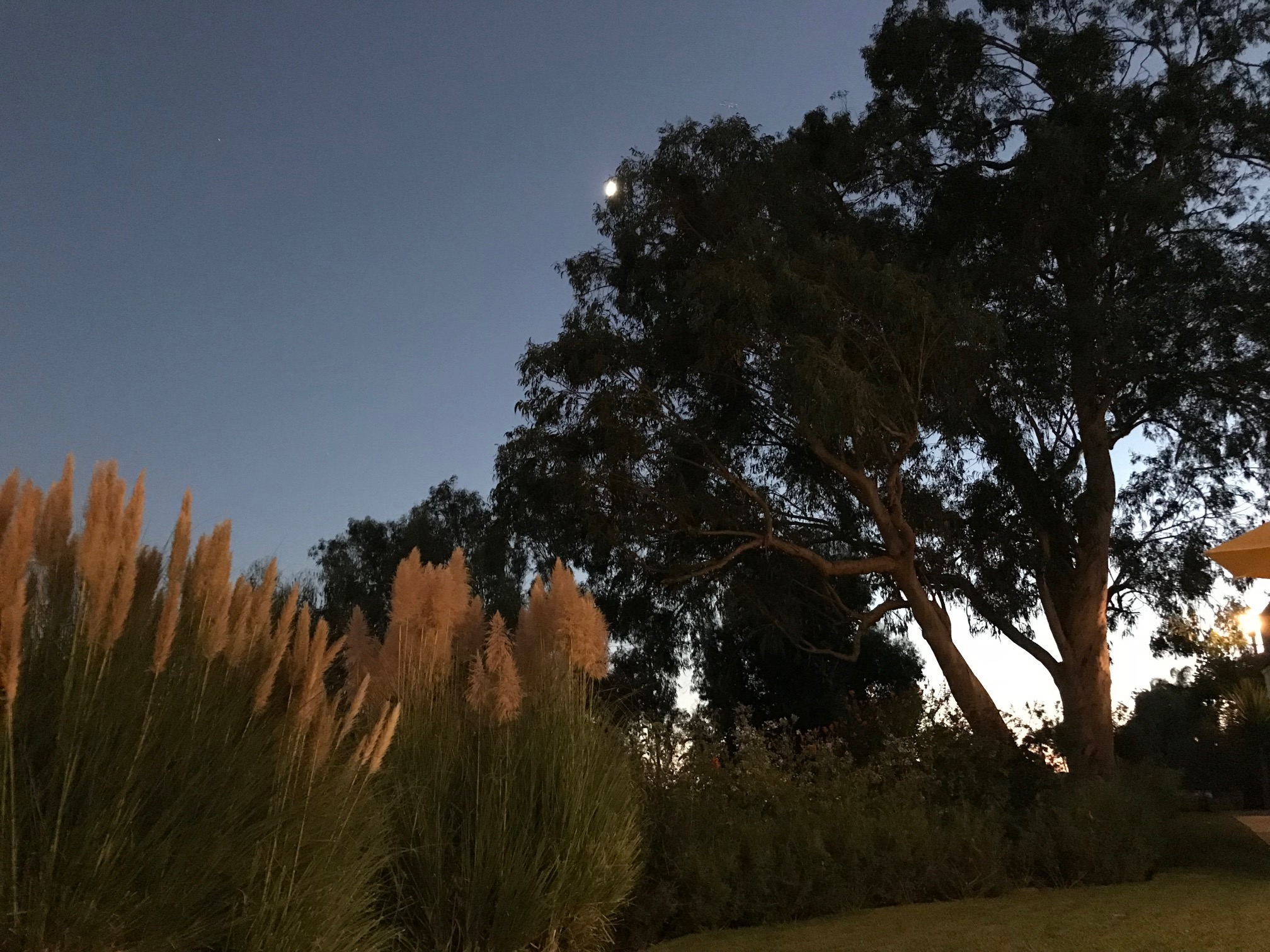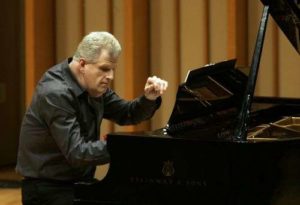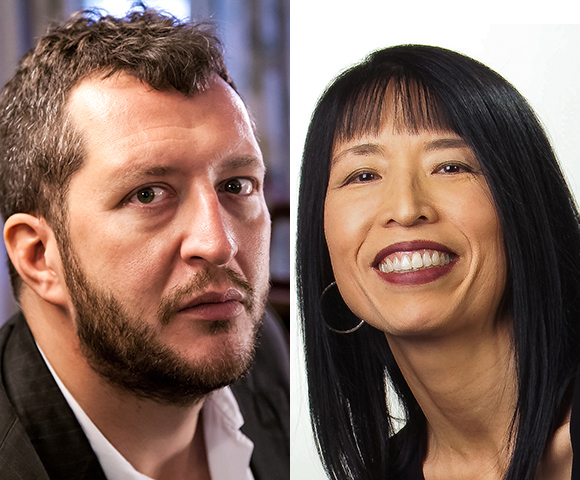Your cart is currently empty!
Tag: Olivier Messiaen
-

Ethereal Visions and Dangerous Liaisons: Adès and Cheng in concert at Zipper Hall
<p>For many of us in Los Angeles glued to a screen as a ferociously hot Tuesday afternoon faded with an exhausted sigh into a still intolerably warm Tuesday evening, possibly toggling between one task and another as <strong>Venus</strong> commandingly wrested a second set win from her dearest rival, <strong>Serena</strong>, the idea of tearing ourselves away to shlep downtown to <strong>Zipper Hall</strong> – even for such a rare pairing as the composer and pianist <strong>Thomas Ad</strong><strong>è</strong><strong>s</strong> and the great pianist and exponent of contemporary music, <strong>Gloria Cheng</strong> – might have seemed a bit of an ordeal. It was – and it was answered by a piano concert on the order of a calendar Grand Slam.</p><p>I was far from alone in making the trip: the hall was packed. It occurred to me around intermission that any number of attendees might have monitored the last moments of the Williams sisters’ quarter-final match from smart phones or satellite radio. But all of us were aware that something extraordinary might be in store for us. We were not disappointed.</p><p>Adès, like many of the men in the audience, was in shirtsleeves – even in the well air-conditioned auditorium, we were all recovering from mild heat exhaustion – all in black. (The page-turners followed suit.) Cheng was elegant in a Grès-like wrap gown in black-and-white with the wrap making a fan of the bodice. The program began with Adès’ own two-piano arrangements of two of <strong>Conlon Nancarrow</strong>’s famous <strong><em>Studies for Player Piano – Nos. 6 and 7</em></strong>. It’s immediately apparent to anyone who has heard (or seen – e.g., on YouTube) any of these <em>Studies</em> that not even four hands at a single piano could conceivably replicate the player-piano performances. A few of the Studies that open with a slightly narrower tonal range and leisurely pace offer an opening to the pianist or pianists who wish to essay them – but not for long. They get <em>complicated</em> – and although four hands at two pianos make the task a bit more physically manageable, it’s no less complicated. No. 6 began with scales (Cheng) against a five-note ostinato (Adès), that was soon complicated both harmonically and rhythmically. The scales took on grace notes; note and chord progressions took on a rolling, barcarolle-like rhythm. Then came a fresh attack and the bass line took on a new purity. This was answered by the rich harmonics of upper-register chromaticism in Cheng’s part, with a ‘resolution’ (if you can really call it that) of chords progressing up and down the keyboards.</p><p>The second Study was more contrapuntal, almost a contentious articulation of the separate piano parts, yet with an immense purity throughout. Here the counterpoint of ascending and descending scale figures became a double-counterpoint with the rhythmic syncopation between the parts. A jazz-inflected section climaxed the ‘development,’ which then gave way to the ‘syncopation’ of staggered sequences – one noted the eighth rest ‘breaths’ – eliding into seven-note figures that culminated in a pyrotechnical frenzy, with the pyrotechnics more or less equally distributed between Adès and Cheng.</p><p>Adès then took an adjoining bench beside Cheng for the 1950 Sonatina for piano four-hands by <strong>Gy</strong><strong>ö</strong><strong>rgy Ligeti</strong>. The sonatina takes a form that might almost be called appropriationist in the visual arts, as if making an ornament or a few closing notes into the main figure or subject (in the upper register), with harmony and rhythm hammered out insistently in the bass. It has a scherzo or even humoreske quality, as if <strong>Satie</strong> were scoring a silent Western; but its charm should not be underestimated. The andante second movement is similarly reduced to its barest bones – a series of chord inversions, parallel four-cornered figures, climbing into the upper register as if to answer the steady four chord lower register drone; only to resolve finally in the insistent bass-line chords. The sonatina closes with another fast-and-furious movement, again with swiftly hammered four-chord motives in close harmonies, with sharp attack on the first notes, building subtly to a gallop, but closing with a kind of bird’s-eye resolution in the upper register rather than a ‘ride into the sunset.</p><p>The two pianists then changed places again for Adès’ two-piano arrangement of his own <strong><em>Concert Paraphrase on Powder Her Face</em></strong>. There was a bit of suspense in the hall for this – I almost felt the piano-switch maneuver was to make us catch our breath a bit before what is, after all, an opera played out on a (two-)piano stage. For those of us who lapped up the scandals of ‘Marg-Arg,’ as the <strong>Duchess of Argyll</strong> was frequently referred to in the press, the opera seemed as inevitable and irresistible as the <strong>Marc</strong> caricatures of her we would see in the <strong><em>Tatler</em></strong>. It took Adès (with <strong>Philip Hensher</strong>) to bring it to life – and what a life! The <em>Paraphrase</em> is a distillation as much as a compression of the operatic setting (hard to think of compressing such a life even into a relatively compact ‘chamber’ opera), but as such brilliantly captures its underlying concept and principal motives: the Duchess attending with some elaboration to what she (and some fairly consequential figures of her society) regarded as her principal assets – the primping, powdering and perfuming of her beauty; the pandering of her sex. The opera was fairly notorious for replaying one of the Duchess’s most notorious scandals: her, uh, double-disappearing-head dalliance with the Minister of Defense (an affair that triggered her divorce from the Duke and steady decline).</p><p>Cheng and Adès crashed right into it – the beginning passages evoking great Stravinsky dissonant statements. Adès seemed to be conducting himself (and Cheng?) at the piano as well he might – hard to call the sound orchestral, but it was certainly dense and rich. Adès has a marvelous way of juxtaposing declamatory lines against louche rhythms and lush harmonies and they were richly displayed this evening. The <em>Paraphrase</em> is packed with musical incident: tango rhythms and music hall cacophony contend with the high drama of arias. Rachmaninov-like chromatics elevate (or simply exaggerate) the high camp gesture. Staccato passages and what sound like fragments of romantic songs commingle with alternately supine sustains and nervous pacing in what could be a film score of this well-‘powdered’ life. Adès and Cheng worked through this with breath-taking precision evident throughout, but emphatic in such passages as those staggered lines leading to a penultimate largo that itself gives way to a shimmering chromatic fade-out – as if processing the Duchess across a bridge of sighs</p><p>Just halfway through the evening’s program, most of the audience were in full acknowledgment of the extraordinary event they were witnessing. For certain pianists, the first half of the program would have made a pretty full evening. You couldn’t really call it a warm-up – but the performance of <strong>Olivier Messiaen</strong>’s 1943 seven-part <strong><em>Visions de l’amen</em></strong> was to take us all into the stratosphere. It is said that the central four-note motive of Beethoven’s Fifth Symphony was inspired by a birdsong; and Messiaen was never less inspired by birds than here. But there are also carillon bells (you hear this especially in the first section); gamelan tones; and an insistent sentinel-like repeated note reminiscent of the ‘Gibet’ section of <strong>Ravel</strong>’s <em>Gaspard de la Nuit</em>. The scope of Messiaen’s program here is almost jaw-dropping, moving from the clangorous bass and treble chords <em>de la cr</em><em>é</em><em>ation</em>, to the oblique harmonies moving in slightly skewed parallel to each other of <em>les </em><em>é</em><em>toiles, etc.</em> to the emphatic dissonances and repeated chords of <em>l’agonie de J</em><em>é</em><em>su</em>, and finally through passages that evoke a ballet of <em>jugement</em> (which, in its <em>Petrouchka</em>-like complexity made an ironic foil for the earlier opera) and <em>consommation</em>, closing in ethereal, proto-minimalist passages that return us to the domain of <em>les oiseaux</em>. I concede here that it is impossible to do justice to a concert and peformances of such magnificence in a blog post (and can only pray that it was being recorded); but as ballets go, Adès and Cheng’s sacred and profane pas de deux took us all straight to the stars.</p>


